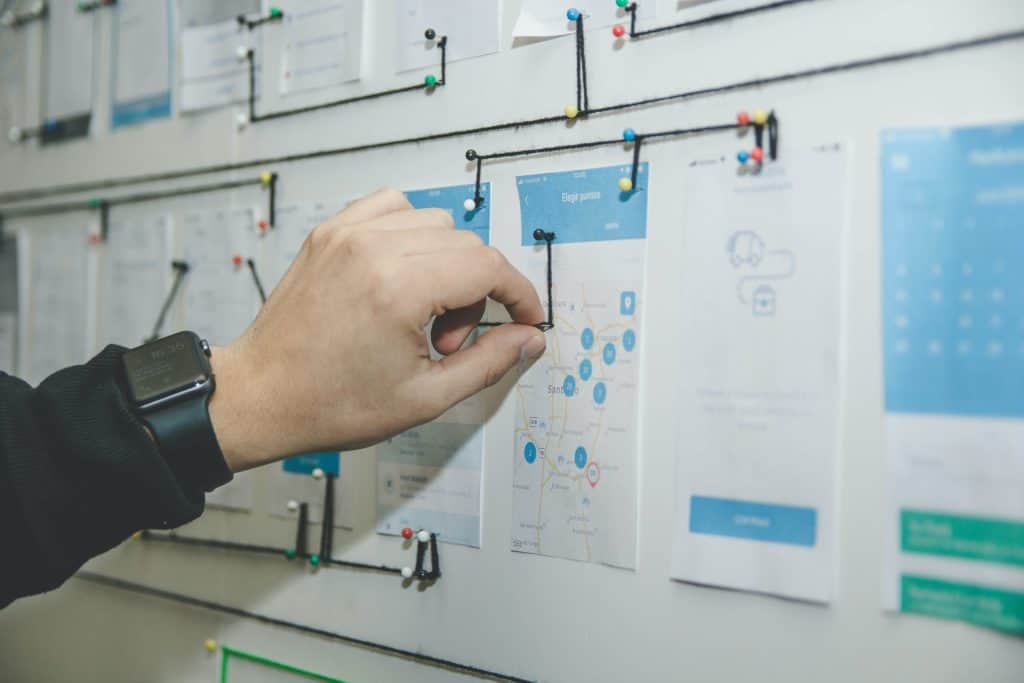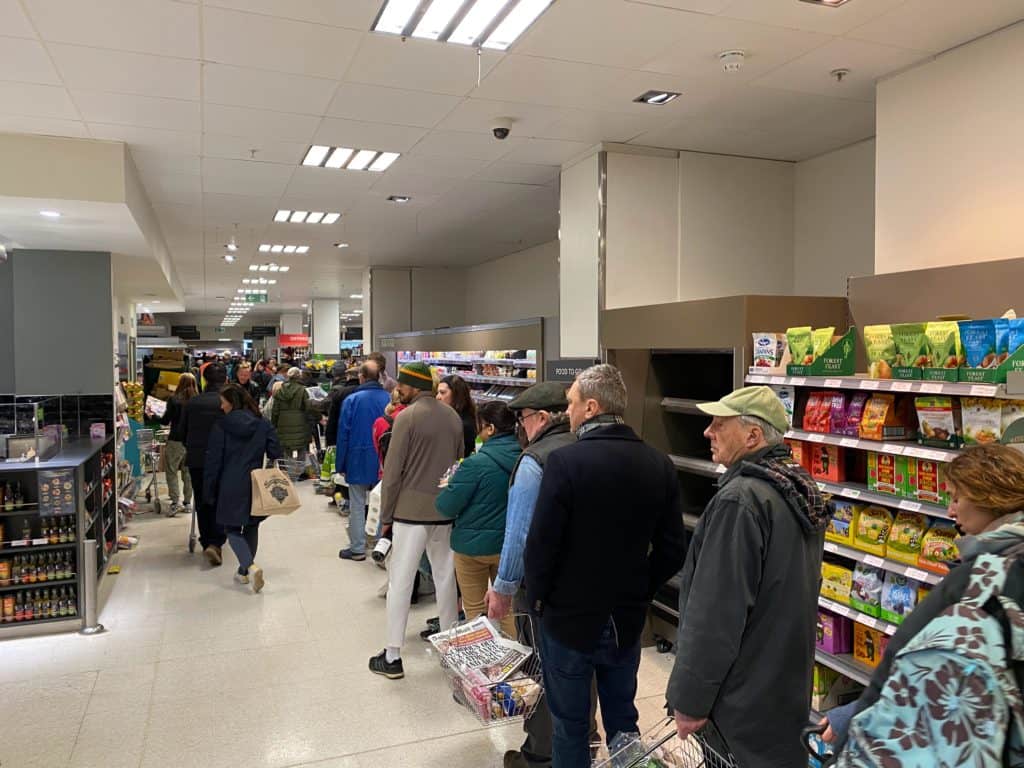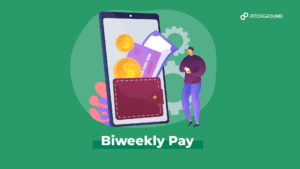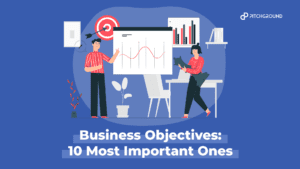To understand how customers buy from you, you must first know where they are. It means understanding your customer, why they purchased from you before, and what they expect next.
This guide will help you plan your customer’s journey, analyze your current customer base, and find new opportunities to convert your existing customers.
Statistics
Factual sentences referenced across top search results:
- According to Baymard Institute, nearly 70% of online shoppers abandoned their cart in 2021.
- Salesforce reported that 80% of customers consider their experience with a company to be as important as its products.
- 33% of customers will consider switching brands after just one poor experience.
- If you write down the touchpoints where the customer interacts with your brand, you’re typically missing up to 40% of the entire customer journey.
What is a Customer Journey Map?

Customer journeys are a visual representation of the path that customers take through your business. It shows where they start, what they do next, and ultimately where they end up.
While these maps vary depending on the type of business you run, they typically include three main stages: awareness, consideration, and conversion.
Awareness refers to when someone becomes aware of your brand or service.
Consideration occurs after they become interested in your brand or service.
Conversion happens when they decide to buy from you.
These stages can be broken down into smaller segments to give you a better idea of what your customers are doing.
For example, selling shoes online might break down the customer journey into four segments: awareness, interest, decision, and purchase.
To create a customer journey map, start by identifying the different touchpoints along the path.
These could be emails, phone calls, web pages, or other interactions between you and your customers. Then, write down each of these points and determine what stage they fall under. Finally, add arrows to connect the various points.
Once you have a rough draft, you can refine it by adding additional details. For example, you might add a timeline to show when certain events occurred. Or you might add more detail to specific points in the process.
The goal here is to provide a clear picture of your customer’s buying experience with your company.
Why is a Journey Map important?
Journey maps are handy for businesses to understand their customers’ journeys. These maps allow you to visualize customer behavior and discover where you might be able to improve your business processes.
These are generally developed by the marketing team keeping in mind the business goals and customer satisfaction.
For example, if you sell shoes online, you could create a map that shows how customers move through various stages of the purchasing process.
The map would include different colors representing each stage and arrows connecting these stages. It would also have data points that represent critical events along the path, such as when someone buys a pair of shoes from you.
This type of map helps you understand what happens after someone visits your website, and it gives you insight into how you can improve your conversion rates.
It’s easy to create a journey map. Simply set up a spreadsheet with columns for each stage of the purchase process, then add rows for each event during the process.
For example, you could have a column for “purchase,” another for “checkout,” and yet another for “delivery.” Then, write down the dates and times of each event.
Next, connect the dots between the events. For example, if someone purchases a pair of shoes, you could connect the dots between the “purchase” row and the “checkout” row. It will give you a visual representation of the entire process.
Once you’ve completed your journey map, you can share it with your team. It will help everyone understand the customer experience and provide insights into ways to improve it.
The Customer Journey Mapping Process
Customer journeys are critical to understanding your customers and developing effective customer relationships. The customer journey mapping process helps you know where your customers are coming from, what actions they’re taking, and what they expect from your brand.
It allows you to create personalized experiences for each user, making it easier for them to trust your brand and buy from you again.
To begin, you’ll need to determine who your ideal customer is. Who are these individuals? What motivates them to purchase from you?
How does your business benefit from knowing this information? Once you’ve answered these questions, you can map out the customer journey.
Start by creating personas. Personas are fictional characters that represent different types of customers.
Each persona has unique characteristics, motivations, and goals. For example, a persona might buy products online frequently, while another is a casual shopper who prefers to shop in brick-and-mortar stores.
Next, you’ll need to identify the touchpoints along the customer journey. These are the moments when a potential customer interacts with your brand.
Think about where your customers interact with you, including social media, emails, phone calls, and physical locations.
After you’ve mapped out the customer journey, you’ll need to analyze the data. Identify trends and patterns in the data to gain insights into your customers.
You can then use this information to develop strategies to reach new customers and retain existing ones.
Once you have a clear picture of your customer journey, you can focus on improving the experience. Create more personal interactions with your customers through email, text messages, and other forms of digital communication.
Make sure that your website is easy to navigate and loads quickly. Finally, offer incentives to entice customers to stay loyal to your brand.
Using a Customer Journey Map to Improve the Customer Experience

Gaining a deeper understanding of your customer
Customer journeys are a great way to gain a deeper understanding of your customers. These maps allow you to understand where your customers are coming from, what they’re doing while visiting your website, and their actions during their journey.
You can learn more about your customers and create a stronger connection between them and your brand by mapping out these journeys. It’s also helpful to see where improvements can be made to enhance the overall experience.
Creating a Customer-Centric Company
Customer journey maps are a powerful tool for companies to create a truly customer-centric experience.
These visual representations of customers’ journeys through a business allow teams to understand where customers are coming from, what problems they encounter along the way, and what actions they take to resolve these issues.
By mapping out the entire customer journey, businesses can gain valuable insights into their customers’ needs and preferences. It helps them design products and services that meet their customers’ expectations and ultimately drive sales growth.
Customer Journey Map Design
In today’s digital world, customers expect a seamless customer experience from every company they interact with.
In fact, according to Forrester Research, nearly half of consumers say that if a business doesn’t provide a positive online experience, they’ll choose another brand over theirs.
To create a successful customer journey map, you must understand the needs of your customers and the challenges they face along the path to purchase. The goal is to design a solution that helps solve these problems.
For example, let’s say you sell a service to small businesses. As part of your customer journey map, you might discover that many of your customers struggle to find qualified leads.
So, you decide to offer a lead generation program that provides free training and resources to help your customers develop qualified leads.
This type of service would be included in your customer journey map as a “lead generation” feature. It could consist of specific details about the services you offer and the benefits of each.
Next, you might discover that most of your customers prefer to communicate via phone calls rather than emails.
So, you add a feature to your website that allows customers to schedule a call with a sales representative.
Finally, you might notice that some of your customers have trouble scheduling meetings with their sales representatives.
So, you decide that it makes sense to integrate your CRM system with your calendar software. The information gets automatically sent to the CRM whenever a customer plans a meeting.
The point here is that you’re designing a customer journey map based on real insights into your customers’ needs. And by doing so, you’re creating a more compelling customer experience.
What is a Customer Touchpoint in a Customer Journey Map?

A touchpoint is an event in a customer journey map where a customer interacts with a brand.
It represents an opportunity for a company to influence customers’ perceptions of its products and services.
Touchpoints can occur anywhere in a customer journey map, such as at a store, website, call center, or social media channel.
For example, a customer may interact with a brand via a phone call to ask questions about a product or service. Or, a customer may physically go into a store to buy something.
These interactions represent opportunities for companies to influence customers’ perceptions of their brands.
Why Do Companies Care About Touchpoints?
Companies care about touchpoints because they provide insights into how customers perceive their brands.
This information helps companies understand how to market their products and services better.
How Can You Use Touchpoints to Improve Marketing Efforts?
By understanding how customers view your brand, you can identify areas where you need to improve your marketing efforts to reach them effectively.
Here’s how to do it:
1. Identify the touchpoints that happen within your customer journey maps.
Start by identifying the touchpoints that happen along each step of your customer journey.
For example, if you’re selling a car, you might have touchpoints like these:
• A customer calls your dealership to inquire about buying a car
• The salesperson takes the customer’s order over the phone
• The customer picks up her car at the dealership
2. Analyze the data collected from each touchpoint.
Once you’ve identified the touchpoints that happen during your customer journeys, analyze the data collected from each one.
Do you know why people choose to purchase from you instead of another competitor? How many times did customers contact you before purchasing? What were the most common reasons for contacting you?
3. Create a plan based on the results of your analysis.
Based on the results of your analyses, create a plan for improving your marketing efforts.
For example, you could decide to increase your advertising budget or change your pricing strategy.
How to Create a Customer Journey Map

Set clear objectives for the map
Customer journey maps are a powerful tool for understanding customer behavior and identifying opportunities for improvement. But if you don’t set clear objectives for your map, you could waste a lot of time and money.
Before starting work on your map, decide precisely what you want to achieve from it.
For example, you might want to understand how customers interact with your brand online, or you might like to learn more about your most loyal customers. Once you’ve decided on your goals, write down these objectives.
Next, figure out who needs to be involved in the project. Depending on the size of your organization, you may need to include multiple stakeholders.
It’s best to start with just one person, though, since having too many cooks in the kitchen can lead to confusion and delays.
After defining your objectives, it’s time to create your map. Start by explaining each stage of the customer journey.
These stages should represent different parts of your business, such as the homepage, checkout pages, and other areas where customers interact with your brand.
Each stage should contain several key actions that customers must complete to move through the process. Ensure that you include all of the necessary steps, including any required interactions between stages.
Once your map is completed, you can share it with your team and ask for their feedback. It will help you refine the map and accurately reflect the actual customer experience.
Profile your personas and define their goals
Customer journey maps are a powerful tool for understanding your customers and helping you create a personalized experience for each individual.
These visual representations of customer journeys allow you to know where your customers are coming from, what motivates them, and how they interact with your brand.
To begin creating a customer journey map, you must first profile your personas. Personas are fictional characters who represent different types of customers.
For example, a customer persona could be a young male who likes to shop online and has a disposable income. Once you’ve created your personas, you can then define their goals.
Goals are the reasons why someone would buy from you. For example, a goal might be to save money on groceries.
After defining your personas and goals, you can use these profiles to build a customer journey map.
The customer journey map shows the path that leads a user from the moment they become aware of your business to the point where they convert into a paying customer.
It includes the buyer cycle stages, including awareness, interest, consideration, decision, purchase, and retention.
Highlight your target customer personas

Customer journey mapping is a powerful tool that helps businesses understand who their customers are, where they are in the sales funnel, and what actions they take along the way.
It’s also a valuable tool for helping you create personalized messages that resonate with each user.
To begin, you’ll need to define your ideal customer persona. These fictional characters represent different types of customers based on their demographics, interests, behaviors, and other factors.
Once you’ve defined your buyer personas, you can map out their journeys through your business.
It includes identifying the distinct stages of the buyer’s journey, including awareness, interest, consideration, decision, purchase, and loyalty.
The goal here is to understand how your customers move from stage to stage and what actions they perform along the way.
Next, you’ll need to determine where your customers are in the sales funnel.
For example, if you sell products online, you might have a lead generation form on your homepage, a checkout flow after someone fills out the state, and a thank you page that sends users to your eCommerce store.
You can personalize your message to each user by mapping out these stages. You can also highlight areas of improvement to help drive more conversions.
Finally, once you’ve captured leads, you can send them emails tailored to their specific needs. It Could be anything from a welcome email to a follow-up email that asks them to fill out a survey.
List out all the touchpoints.
Touchpoints are the different ways that customers interact with your business. These include phone calls, emails, social media interactions, etc.
It’s important to understand these contact points to create a customer journey map that shows where your customers are coming from and going next.
To begin, you’ll need to gather data about each point of contact. For example, if you receive a phone call, ask who called and what was said.
If someone sends you an email, ask who sent it and what was included. Once you have all of this information, you can organize it into a timeline.
Next, you’ll need to determine the best sequence of events that leads to conversion. For example, if someone sends you an email asking for a quote, you might send them a reply with a link to a landing page explaining your products’ benefits.
Customer Actions
Once you know which steps lead to conversion, you can build a customer journey map. To do this, you’ll first need to identify the actions throughout the process.
These include filling out forms, clicking buttons, downloading files, viewing videos, subscribing to newsletters, etc.
Once you have identified these actions, you can add them to a timeline. Then, you can use this timeline as a guide when creating your customer journey map.
For example, let’s say that you’re working on a new website redesign. As part of the project, you want to make sure visitors leave your site by taking action.
So, you build a timeline that starts with someone visiting your site and ends with them leaving the site by completing a task or purchasing something.
Customer Emotions Motivations
Now that you have a solid understanding of the various touchpoints and actions within your business, you can start thinking about how those actions affect your customers emotionally.
In other words, you need to think about why people take certain actions.
It is especially true for marketing because most businesses don’t have access to actual human beings. Instead, they rely on automated systems that track behavior patterns.
So, before you design any campaigns, you should always consider why people behave the way they do. After all, knowing the motivations behind a person’s actions will allow you to better tailor your messages to them.
To get started, you’ll need to answer two questions: What motivates people? And Why does one thing encourage some people but not others?
The answers to these questions will help you figure out what types of emotions you need to target.
For example, if your goal is to sell more products, you may want to focus on motivating people to buy. On the other hand, if your goal is to increase brand awareness, you may want to encourage people to visit your company’s website.
The following sections explain how you can use emotions to influence decision-making.
Emotional Triggers
You can use emotional triggers to encourage people to take specific actions. For example, you could create a campaign that encourages people to sign up for your newsletter.
You can also use emotional triggers to remind people of past experiences that made them feel good.
For example, if you’re running a contest, you can use positive feelings from winning to encourage people to enter again.
Similarly, if you’re selling clothes, you could ask people who bought last year’s collection to share their photos. It would be an effective trigger since people are likely to remember the clothing they purchased last year.
One important thing to remember is that emotional triggers work best when they’re tied to a specific event. Otherwise, they won’t have much impact.
For example, you might want to run a contest where people win a gift based on the amount of time they spend reading your blog posts. But, you’d probably only be able to generate interest if you link the prize to a recent post.
In addition to using emotional triggers, you can also use them as reminders. For instance, if you know that you’ve been struggling to find time to exercise, you could set a reminder to jog every day at 10 am.
Or, you could send a text message reminding yourself to eat breakfast every morning.
In both cases, you’re trying to trigger a feeling of motivation. By doing so, you’re hoping that this feeling will inspire you to follow through on your commitment.
Emotions That Motivate People
Once you understand what emotions motivate people, you can begin designing campaigns that appeal to different emotions.
For example, let’s say you want to promote a new product. If you’re looking to motivate people to purchase, you could show them pictures of happy customers and highlight their success stories.
On the other hand, if you want to motivate people to visit a particular page, you could include testimonials or images of satisfied customers.
When creating content, you should always consider whether the emotion you’re targeting is appropriate for your audience.
For example, if you’re promoting a new product, you may want to avoid showing people images of unhappy customers because this might make them think less about buying.
Similarly, if you’re trying to motivate people to visit another page, you may not want to include negative comments about the page itself. Instead, you could focus on highlighting the benefits of visiting the page.
Asking Questions
The next step is to start asking questions. When you do so, you’ll be able to learn more about your customer’s needs and desires.
For example, suppose you’re planning a special promotion for people who subscribe to your email list. To help them decide whether to join, you could ask these types of questions:
What type of products/services does my industry sell? How often do I need to update my website? What kind of content do I typically publish? Do I offer any discounts?
These questions aren’t just helpful for understanding your own business; they’re also beneficial in determining which products and services you should feature in your campaign.
If you’re interested in learning more about how to create successful marketing campaigns, check out our comprehensive guide to digital marketing.
In addition, we also provide guides on social media marketing, SEO, paid advertising, content creation, conversion optimization, and analytics.
Common Customer Pain Points

In today’s world, customers expect a seamless customer experience. When they visit your website, they want to feel like they’re part of a community where they can connect with other customers and learn from each other.
To create a truly memorable customer journey, you must understand your customer’s obstacles and pain points.
These are the problems that prevent customers from completing their purchases. Once you know these issues, you can design solutions that address them.
For example, if your customers struggle to find your products online, you might offer a special discount code to access exclusive deals.
Or, if they’re having trouble finding shipping options, you could add a map to your checkout page that shows exactly where they can pick up their items.
By understanding your customers’ obstacles and pain points, you can create a customer journey map that helps your customers complete their purchases. It lets them know what they need to do next and provides them with helpful resources.
This type of customer journey map is beneficial for eCommerce sites. For instance, if you sell clothing, you might include a section on your homepage that explains how to wear your clothes.
Then, you could link to articles that teach customers how to style themselves. Finally, you could provide a video tutorial that teaches customers how to put together outfits.
Once you have a clear idea of your customer’s obstacles, pain points, and solutions, you can begin designing a customer journey map.
You can use tools like Google Analytics to track user behavior and figure out what needs to change. You can also use tools like Optimizely to test different designs and measure their effectiveness.
Once you have everything set up, you can share your customer journey map with your team. It will allow everyone to work together to create a more compelling customer experience.
Determine the resources you have and the ones you’ll need
Customer journey maps are helpful tools for businesses to understand where customers are coming from and where they’re going. They allow you to track customer behavior over time and determine whether you’re meeting their needs.
To create a customer journey map, you’ll need to answer three questions:
• What are your current resources?
• Where are your customers coming from?
• Where are they going?
Start by identifying your current resources. These could include products, services, employees, partners, and other assets that you currently own. Then, look at where your customers are coming from.
For example, if you sell widgets online, you might find that most of your traffic comes from Facebook ads.
Next, figure out where your customers are going. It includes determining the next steps they’re taking after visiting your website. It could be purchasing a widget, signing up for a newsletter, or filling out a form.
Once you have these answers, you can begin mapping out the path that leads to conversion.
You can use a tool like Google Analytics to help you visualize your customer journey. With this data, you can then adjust your strategy accordingly.
For instance, if you notice that most of your customers are leaving without completing a purchase, you can focus more on making purchases more manageable.
Once you’ve created your customer journey map, you can share it with your team to gain valuable insights into your business. You can also use it to plan future marketing efforts and optimize your website.
Take the customer journey yourself.
This is an essential step you need to take as taking the customer journey yourself gives you a deeper insight into understanding if the map you have made covers all the vital touchpoints and triggers that can lead to a seamless customer experience.
Make the necessary changes.
If the customer journey feels rushed or leaves out vital strategies or points, you can make the necessary change to make it more seamless.
Types of Customer Journey Maps
Customer journeys are beneficial for businesses because they allow companies to understand where customers are coming from and what actions they’re taking during their customer experience.
There are two main types of customer journey maps: event-based and behavior-based. Event-based maps focus on specific events that occur within the customer lifecycle, while behavior-based maps highlight the different stages of the customer lifecycle.
Event-based maps are typically used to analyze data from online surveys or other forms of research.
Behavior-based maps are usually created through interviews with customers and employees. Both types of maps provide valuable insight into the customer journey.
Regardless of which type of map you choose to create, it’s important to remember that the goal is to understand your customers better. Once you’ve done that, you can optimize your business processes and products based on these insights.
Customer Journey Mapping Best Practices
Set a goal for the journey map
Customer journey mapping is a powerful tool that helps businesses understand their customers’ needs and wants. It allows companies to visually represent their customer’s path through the sales funnel, from awareness to purchase.
By creating a customer journey map, you can gain valuable insights into your customers’ behavior and preferences. You can then use these findings to develop targeted messaging and optimize your business processes.
To set yourself up for success, consider the following best practices:
• Set a clear objective for your customer journey map. What are you trying to accomplish? How will you measure its success?
• Define your ideal customer profile. Who is your customer? What do they look like? What are their interests?
• Identify your key touchpoints along the customer journey. Where do customers interact with your brand? Which channels do they visit most frequently?
• Create personas. Personas are fictional characters that represent different types of customers. By understanding your customers, you can craft messages that resonate with them.
• Map the customer journey. Once you’ve defined your customer profiles, you can begin mapping the customer journey. Start by identifying the customer lifecycle stages and where each stage occurs within your business.
• Analyze data. Find out which stages of the customer lifecycles were most effective and why. After you have mapped out your customer journeys, you can analyze the data collected during the process.
• Develop strategies. Once you know what works, you can create strategies to implement those tactics. For example, if you found that email was a particularly effective channel for reaching new customers, you could send emails at certain times to entice more people to sign up for your services.
• Measure results. Finally, once you’ve implemented your strategy, track the results. See whether your efforts paid off and determine what changes need to be made next time.
Survey customers to understand their buying journey
One of the most effective ways to learn about your customer base is through customer surveys. Surveys allow you to collect data from real people interested in your products or services.
While it might seem intimidating to ask potential customers questions, it’s very easy to conduct a survey. Just follow these three steps:
1. Create a survey template.
2. Design the survey.
3. Send the survey to your customers.
Once you receive responses, analyze the data to gain insights into your customer base.
For example, you could look at the answers to see if there are any common themes or patterns among your customers. You could also compare the answers to similar surveys conducted by other companies.
This type of research can give you valuable insight into serving your customers. It can also help you develop future products and services that meet their needs.
Ask your customer service team about the questions they receive most frequently
Customer support teams work hard to answer questions from customers every day. But sometimes, they miss the mark and answer questions that aren’t common.
To avoid these situations, ask customer service reps about the most frequent questions they receive. Doing so will give you insight into what types of questions customers ask and allow you to create content that answers those questions.
This type of research can also help you determine whether certain products or services would benefit your company.
For example, if you sell software, you might ask customer service agents about the questions they receive regarding specific features. It could lead to new ideas for future releases of your software.
Create a customer journey map for each buyer’s persona
A buyer’s journey is an integral part of understanding your target audience. A buyer’s journey maps the path that leads someone from awareness of your product or service to make a purchase decision.
This exercise aims to identify the different paths that buyers take when considering buying your product or service.
By mapping out the various stages of the buyer’s journey, you can better understand where your business stands with respect to its competitors.
You can use a variety of tools to create a buyer’s journey. Some examples include:
• Google Analytics
• Salesforce
• Hubspot
• Mixpanel
You can also use customer journeys to:
• Determine which pages on your website convert the highest number of visitors into sales
• Identify the main reasons why people abandon their shopping carts
• Understand what motivates them to buy
• Find out what makes them choose one product over another
• Learn more about their preferences and behaviors
• Help you decide which marketing tactics will be most effective
Use customer journey maps to find the right balance between personalization and automation.
Personalization refers to tailoring your messages based on the interests and behavior of individual users. Automation refers to automating repetitive tasks using artificial intelligence (AI).
When creating personalized experiences, you need to strike a balance between these two approaches. Too much personalization can make your messaging sound like spam. And too little automation can result in a poor user experience.
For example, consider a travel site that offers a free trial to new users. If the site sends emails to all users who sign up during the trial period, it will have a lot of low-quality traffic. However, if it only sends emails to users who opt-in, it won’t reach as many potential customers.
If you’re looking to improve your conversion rate, you should focus on improving the quality of your traffic by sending fewer but higher-quality emails. You’ll want to automate some of your email campaigns to do this.
In addition, you may want to add a few steps to the process to ensure that your automated emails don’t end up in the spam folder. You can do this by adding a disclaimer at the top of your emails stating that the site owner does not send them.
Review and update each journey map after every significant product release
As you continue to learn more about your customers, you’ll likely discover that there are changes in how they interact with your brand. In other words, your customer journey evolves.
It means that you’ll need to revisit your customer journey maps regularly to keep track of any changes.
For example, let’s say that you sell clothing online. You might notice that women prefer to shop for clothes on mobile devices while men prefer to browse through catalogs on desktop computers.
Based on this insight, you could change how you present products on your website. For instance, you could display images of men wearing your shirts next to images of women wearing those same shirts.
Another option would be to provide separate landing pages for male and female shoppers. These pages would contain different content and feature various styles of photography.
You could also use AI to automatically generate new content based on the gender of the person viewing the page.
You wouldn’t have to worry about updating your content manually.
The key takeaway here is that you shouldn’t just create one set of journeys for everyone. Instead, you should tailor your journeys to match the needs of specific groups within your audience.
You’ll increase the chances that your customers will stay engaged with your brand by doing this.
Make the customer journey map accessible to the cross-functional team

While most businesses rely heavily on marketing departments to manage their customer journeys, this approach isn’t always effective.
Instead, it makes sense to involve employees from across the company whenever possible.
For example, salespeople often work closely with support staff when dealing with issues or questions. As such, it’s essential to include them in the development process.
Similarly, marketers often collaborate with IT specialists to determine which tools best serve their business objectives.
To ensure that these stakeholders understand what’s going on, it’s helpful to share the customer journey map as a visual representation of the overall plan.
It’s also worth noting that many modern CRMs allow users to customize their dashboards to reflect the needs of individual team members.
If you’re looking to streamline your customer journey mapping efforts, try using a tool like HubSpot. You can quickly build custom reports that show insights into your customers’ behavior with this platform.
In addition, you can automate processes to save time and ensure that all necessary data is collected.
In short, if you want to improve your customer experience, you need to start by making the journey map accessible to the right people.
Benefits of Customer Journey Mapping
You can refocus your company with an inbound perspective
Customer journey mapping has become increasingly popular over the past few years. It helps companies understand the customer experience from beginning to end, and it provides valuable insights into where customers are coming from and what they’re doing along the way.
This type of analysis can help businesses improve the overall customer experience. For example, suppose a company knows that most of its customers come from organic searches.
In that case, it might consider investing in paid advertising to drive more traffic to its website.
In addition, customer journey mapping can help businesses determine whether they’re meeting their goals. For instance, if a company wants to increase sales, it can map out the path to a sale.
Then, it can work backward to figure out precisely what needs to change to achieve that goal.
You can create a new target customer base.
One of the most significant benefits of customer journey mapping allows businesses to identify potential new customers. It means that you can segment your existing audiences based on how they behave during different buying cycle stages.
As a result, you can develop customized messages for each group. You can also use the information to find new ways to market to your current audience.
You can implement proactive customer service.
Customer journey maps give businesses insight into their customers’ expectations throughout the entire lifecycle.
In other words, they provide detailed information about what happens before, during, and after a transaction.
With this knowledge, businesses can proactively address any issues or concerns. They can also communicate clearly with customers who have questions or complaints.
For example, if a customer calls your business to complain about a product, you know exactly when they were at the decision-making point. It allows you to intervene and resolve the issue before it escalates.
You can make better decisions.
The beauty of customer journey mapping is seeing patterns in your customers’ behaviors. It makes it possible to predict future trends and opportunities.
For instance, you can use customer journey mapping to discover which products are selling well and which aren’t.
As a result, you’ll be able to adjust your marketing strategy accordingly.
You can gain deeper insights into your customers’ preferences
Combining the data gathered through customer journey mapping with surveys and interviews can get a clearer picture of your customer’s value.
For example, you can learn which attributes matter most to your customers, such as price, quality, design, and delivery time.
You can improve your customer retention rate.
If you want to retain your best customers, you need to understand why they choose to do business with you instead of your competitors.
Customer journey mapping can help you uncover these reasons by providing details about how customers interact with your brand.
It can also show you where you could improve your customer experience. For example:
If most of your customers purchase online, you should invest in an eCommerce platform.
If most of your buyers come from social media channels, you should optimize your content for Facebook and Twitter.
You can create a customer-focused mentality throughout the company
Customer journey mapping can also help companies become more customer-centered.
It means that everyone within the organization will focus on delivering great experiences for every single customer.
Your employees will be empowered to take action whenever a customer has a problem or question. And they’ll be trained to deliver exceptional customer service.
As a result, you’ll increase sales, reduce costs, and boost profits.
So whether you’re looking to grow your business or simply trying to keep up with the competition, customer journey mapping is one tool that can help you achieve all three goals.
Organizing with touchpoints and stages
To fully understand your customer’s journey, it helps to break down the process into distinct steps.
These steps are called touchpoints. Each touchpoint represents a specific moment in the buyer’s life cycle.
Customer touchpoints include things like website visits, phone calls, emails, social media interactions, etc.
Each step along the way is called a stage. Stages represent different points in the buying process. They may include research, consideration, purchase, and repeat purchases.
The goal is to organize each stage according to its importance.
You can quickly identify the key moments during the buying process.
And you can then make sure that you’re meeting your customers at exactly those times.
Frequently Asked Questions
No schema found.The Bottom Line:
In conclusion, mapping your customer’s journey is a critical step toward getting a clearer understanding of their needs and expectations. By doing so, you can better understand where they are now, where they want to go, and what they expect from you when they arrive. This will allow you to create a roadmap for your brand that will ensure you meet their needs and exceed their expectations.



